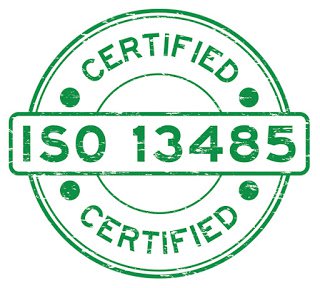What is the International Organization of Standard (ISO) 13485?
For some firms that develop medical devices, ISO 13485 is really important standard. For others, the standard doesn’t mean much. One thing folks think of is that an ISO certified quality management system and process sounds expensive!
When discussing the topic of certification for a design firm and the process you have to go through there is quite a bit of rigor that goes into creating, maintaining and showing compliance to the quality systems. While that overhead will naturally be absorbed into the hourly rate or retainer, in the long run, certification actually makes things less expensive.
The reason why a design firm, like HS Design of Gladstone, NJ maintains ISO 13485 certification is that it brings a tremendous amount of value to our clients. Readers may have heard of the term “right the first time.” When you are talking about product development, engineers chuckle because there are always multiple design iterations. But there are design iterations and then there are major setbacks.
Following a development process that conforms to a certified quality management system reduces the chance of having major setbacks. These systems really help make the design and development processes efficient from the start. More clearly, not just efficient, but consistently efficient. As Michael Quinn, Vice President of Design and Engineering for HS Design explains, “Clients come to us and they expect that they’re going to get the value that they are signing up for. Having a certified process ensures some of the consistency that could be missed if you didn’t follow the process every time.”
Most engineers and designers will agree that the biggest mistake that can be avoided is designing to the wrong product requirements. The quality process dictated by ISO 13485 emphasizes that the inputs for the product have to be considered in a robust manner upfront. User inputs, technical inputs, and risk assessments have to be considered at the beginning of the program and documented. Michael shares that “If you have documented them, and if you’ve done your homework well and you’ve taken those inputs from users of the product, and users could be anybody who interacts with the product, then the chances of getting the right product developed increases. This is just one example of how a quality system helps improve design efficiency.” By taking those inputs and documenting them in the beginning, there is a lot less of a likelihood of missing something toward the end of a project that would cause a major redesign.
Another aspect of a good Quality Management System is the requirement of who handles, categorizes, ranks, and mitigates risk within the development process. Just like a client may miss a requirement upfront, risks can be missed as well. By having a risk process that’s documented you are able to systematically identify and mitigate risks. The process is repeatable and becomes second nature to the development team.
At HSD, Michael says “…ours is a continuing process. We have early risk documents and we don’t leave it there. We update them by phase. You can look for risks and head them off through design and head them off through the appropriate level of testing and analysis prior to getting to, for example, design verification, and having the product show up with a failure that you might not have found prior because you weren’t looking for it.”
Certification does not mean a lack of creativity, however. Good design firms have been able to tailor quality systems, standard operating procedures, and work instructions to reflect the type of work that needs to be completed. It is imperative for any quality manager, especially at a creative firm, to look at the ISO standard and tailor their processes to not only be compliant but to be useful to the development teams and their clients.
At HS Design Mike talks about how they approach documentation as part of their quality system. “We bring documentation upfront in a project where it can provide real value. Many people have probably seen a project where risk analysis, such as a Use FMEA, is actually performed at the end of the project either to “check the box” or because it’s needed for the user validation study. We don’t do that. We create the Use FMEA upfront and refine it as the program advances.
By doing those things up front and being flexible and lean about it, we can do multiple iterations but we get the value out of those documents the way they’re meant to be used. They’re meant to help design a product. By doing that, it gives a lot more freedom. There’s a lot less question about what we’re designing. There’s a lot less question about how the product has to perform in the hands of the users. We’ve built these processes into our quality system and in turn, our quality system ensures we follow the process.”
Compliance and certification do take effort but according to Michael, “…it pays off. It pays off because it does encompass best practices and it holds us and project teams within our firm accountable. Accountability leads to consistency and that consistency helps us to create value for our clients.”
